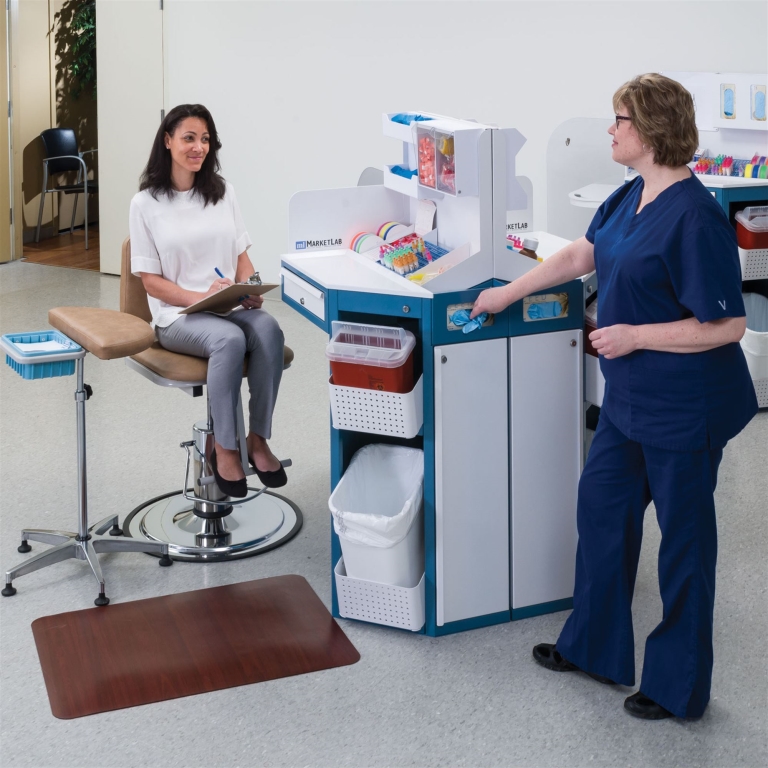What Is a Phlebotomist Technician? A Complete guide to Roles, Skills, and Career Insights
If you’re interested in a healthcare career that combines technical skill with patient interaction, becoming a phlebotomist technician might be the perfect fit. This vital role involves drawing blood for diagnostic testing, research, transfusions, and donations. But what exactly does a phlebotomist technician do? What skills are necessary to succeed? And what does the career path look like? this extensive guide provides all the essential facts to help you understand the role of a phlebotomist technician and how to excel in this rewarding healthcare profession.
What Is a Phlebotomist Technician?
A phlebotomist technician is a healthcare professional trained to draw blood from patients or donors for laboratory testing,blood donations,or other medical purposes. while the terms ‘phlebotomist’ and ‘phlebotomy technician’ are often used interchangeably, some distinctions are worth noting:
- Phlebotomist: Generally refers to the individual who performs blood draws and assists with sample collection.
- Phlebotomy Technician: May encompass additional responsibilities, such as patient care, specimen handling, and documentation, often associated with formal certification or training programs.
Regardless of the terminology, these professionals are crucial in facilitating accurate diagnosis and treatment by ensuring properly collected and handled blood samples.
Core Responsibilities of a Phlebotomist Technician
The primary duties of a phlebotomist technician include:
- Drawing blood from patients, donors, or research subjects using various methods such as venipuncture or capillary puncture.
- Preparing and labeling blood samples accurately for laboratory testing.
- Ensuring patient comfort and maintaining a calm environment.
- Following strict safety and infection control protocols.
- Managing specimen storage and transportation.
- Maintaining detailed records of all blood draws and related procedures.
- Assisting with patient registration and answering questions about the procedure.
Typical settings for Phlebotomist Technicians
- Hospitals and clinics
- Blood donation centers
- Medical laboratories
- Physician’s offices
- Research institutions
Essential Skills and Qualities of a Triumphant Phlebotomist Technician
Excelling as a phlebotomist technician requires a blend of technical skills and interpersonal qualities. Here are the key skills needed:
- Technical proficiency: Mastery of venipuncture, skin puncture, and sample handling techniques.
- Attention to detail: Accuracy in labeling and recording samples to prevent errors.
- Communication skills: Clear, compassionate interaction with diverse patients.
- patient care: Patience and empathy, especially with anxious or challenging patients.
- Knowledge of safety protocols: Sterilization, infection control, and OSHA regulations.
- Physical stamina: Ability to stand for long periods and perform repetitive tasks.
Educational and Certification Requirements
Becoming a phlebotomist technician usually involves completing a formal training program and certification process:
| requirement | Details |
|---|---|
| Training Program | Completing a phlebotomy training course (usually 40-120 hours), which covers anatomy, blood collection techniques, safety, and lab procedures. |
| Certification | Most states and employers prefer or require certification, such as the Certified Phlebotomy Technician (CPT) or Certified Patient Care Technician (CPCT). |
| Licensing | Variations exist; check local regulations. some states license phlebotomists directly. |
| Continuing Education | To maintain certification, ongoing training and recertification might potentially be necessary every 2-3 years. |
Career Outlook and Salary Expectations
The demand for phlebotomist technicians is projected to grow steadily, driven by increased demand for diagnostic testing and blood donations. According to the U.S. Bureau of Labour Statistics (BLS), the median annual salary for phlebotomists was approximately $38,000 as of 2023, with potential to earn more with experience or specialization.
table: Average Salary by Experience Level
| Experience Level | Average Annual Salary |
|---|---|
| Entry-Level | $30,000 |
| mid-Career | $38,000 |
| Experienced | $45,000+ |
Benefits of a Career as a Phlebotomist Technician
- Growing job stability and employment opportunities
- opportunities for advancement into healthcare roles like Medical Assistant or Lab Technician
- Flexible work schedules, including full-time and part-time options
- Meaningful work aiding patient health and research
- Relatively short training programs with quicker entry into the workforce
Practical Tips for Aspiring Phlebotomist Technicians
- Choose accredited training programs to ensure quality education.
- Gain hands-on experience through internships or volunteer work.
- Obtain certification to enhance employability and credibility.
- Develop excellent communication skills to handle anxious or tough patients.
- Stay updated on safety standards and new techniques through continuing education.
- Network with healthcare professionals to find job opportunities.
Real-Life Case Study: A Day in the Life of a Phlebotomist Technician
Meet sarah, a certified phlebotomist working at a large hospital. Her day begins at 7:30 AM, where she reviews her schedule and prepares supplies. Throughout the day, she performs venipunctures on diverse patients, from children to elderly, ensuring each blood draw is safe and agreeable. Sarah also assists with lab processing, maintains meticulous records, and provides reassurance to anxious patients. Her attention to detail and amiable manner help her succeed in a fast-paced environment, making her a valued team member. Sarah’s role exemplifies the importance and rewarding nature of a phlebotomist technician career.
Conclusion
Becoming a phlebotomist technician offers a rewarding pathway into healthcare with meaningful patient interaction and job stability.With the right training, certification, and interpersonal skills, you can embark on a career that makes a real difference-helping diagnose diseases, saving lives through blood donations, and supporting medical research. Whether you’re just starting out or seeking to advance your healthcare career,understanding the roles,skills,and career insights outlined in this guide can definitely help you make informed decisions and achieve success as a dedicated phlebotomist technician.
